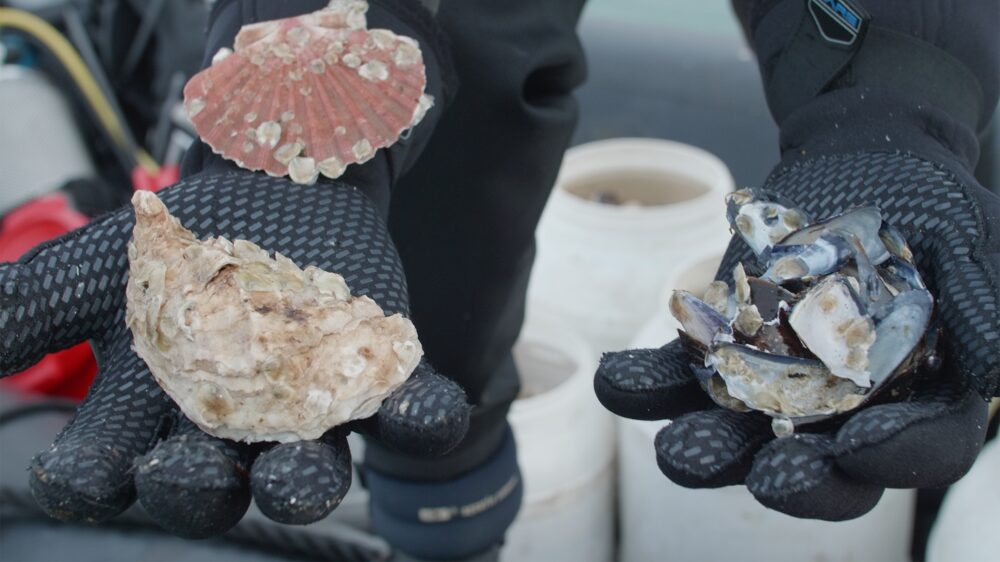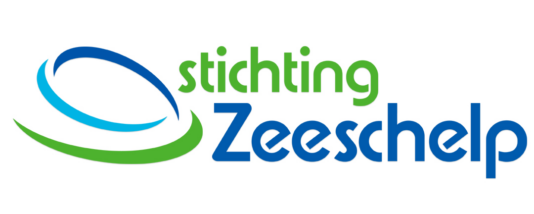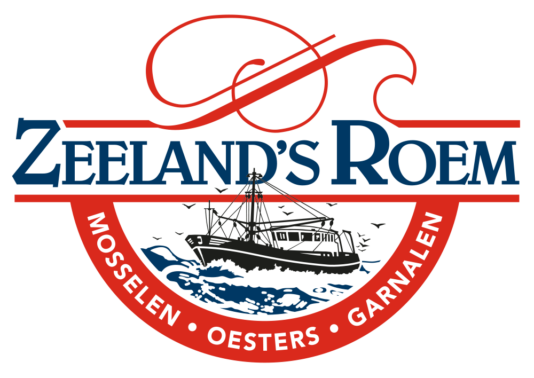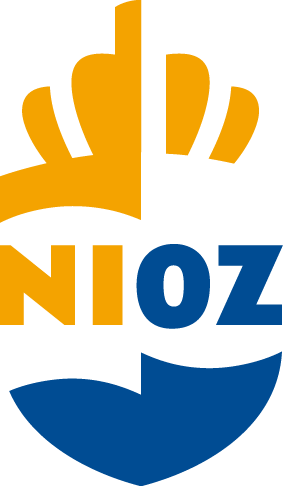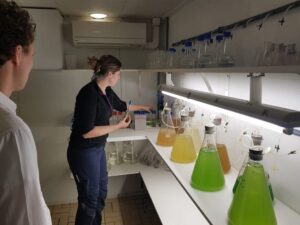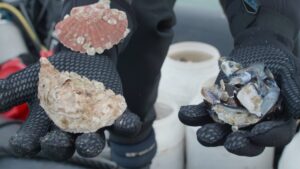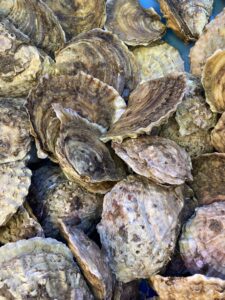Several partners brought unique expertise to this project. Stichting Zeeschelp and Roem van Yerseke led hatchery development and spat production, using different conditioning and breeding techniques. NIOZ and WMR provided scientific research on broodstock health, breeding success, and survival, while HZ University advised on feed quality. Waardenburg Ecology focused on field placement, legal guidance, and monitoring oyster survival in natural conditions.
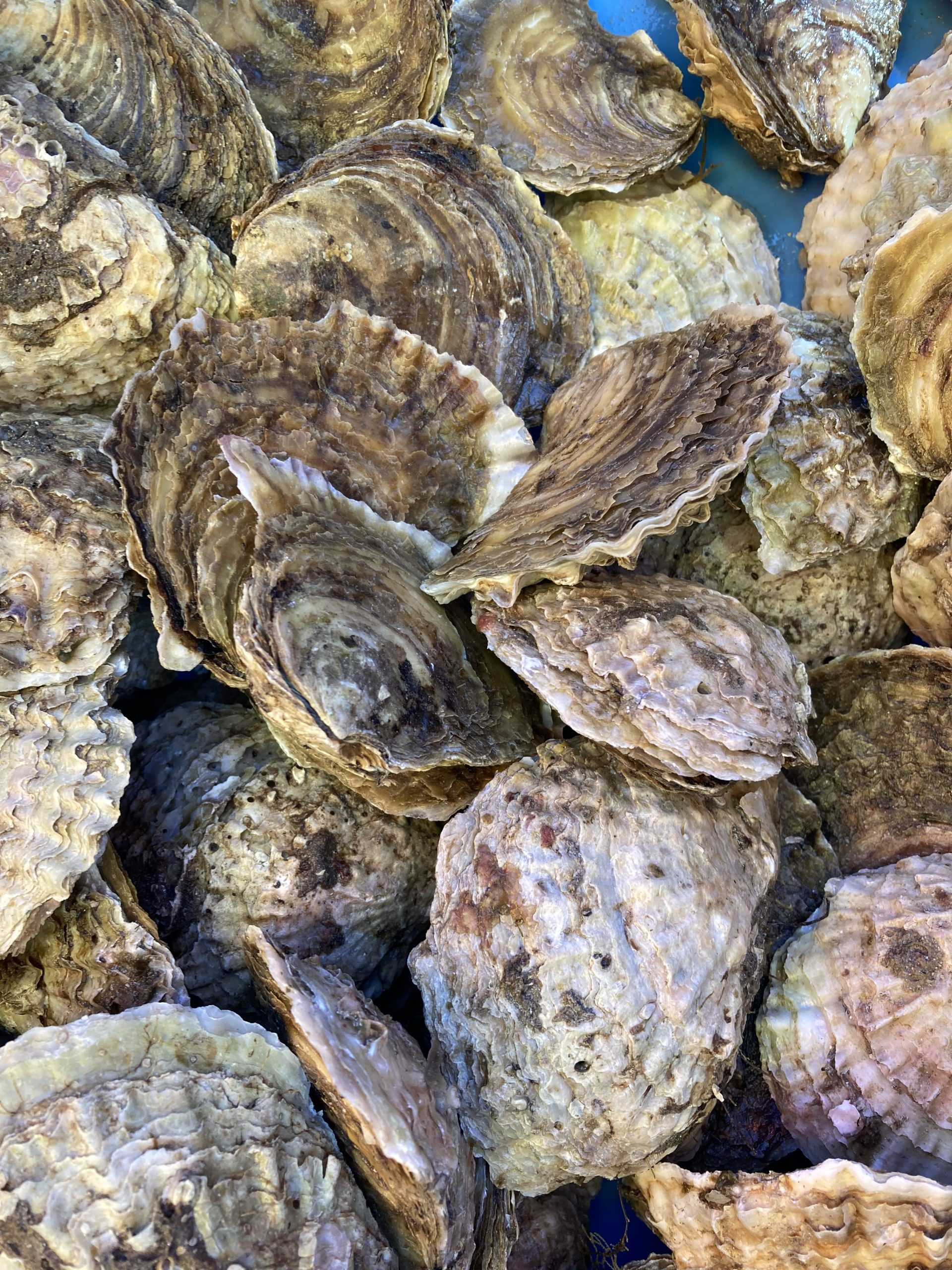
Flat Oyster Breeding Line
Bringing nature's little helpers back to the sea
Over the centuries, natural reefs have disappeared in the North Sea – along with the oysters that used to inhabit them. Oysters are crucial for a healthy marine ecosystem: they filter water, recycle nutrients, and attract marine life. That’s why The Rich North Sea is on a mission to bring flat oysters back to the North Sea. Because oysters are prone to Bonamia parasite infections, this project focuses on breeding parasite-free oysters. With strong, healthy offspring, these oysters can help rebuild reefs, promote a healthy sea, and boost biodiversity in the process.
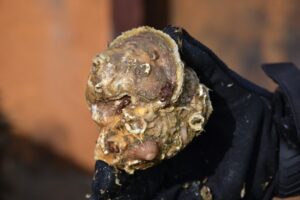
The Research
This research aims to find a predictable, reliable process for producing Bonamia-free oyster larvae and young oysters. This allows us to bring healthy oysters into the wild, and contribute to the restoration of oyster reefs in the North Sea. We’re focused on improving breeding success, enhancing larvae survival rates, and scaling up production.
Efforts were varied over a four-year period. Year one (2020) began with broodstock cultivation in the hatchery, and analysis of Bonamia and oyster spat. The next two years involved analysis of larval culture and survival, oyster spat growth, algae quality, and cultivation. During year four (2023), “spat on shell” was monitored after outplacement, and outplacement methods were researched. This work culminated in a protocol for flat oyster cultivation.
“To get to work on nature restoration, we needed to release a reliable and large-scale supply of healthy flat oysters into the North Sea. We began this research project with that goal in mind, and were provided funding by the National Postcode Lottery. Throughout the project, we stayed closely involved with our partners, monitored progress, and ensured that outcomes and insights were clearly communicated.”
Oskar van Megen – Projectleader Flat Oyster Breeding Line

About the location
Oyster breeding takes place in Kamperland, Yerseke, and off the island of Texel. Once the young oysters are ready, they’re released near the Brouwersdam. These locations provide ideal conditions for breeding and restoration, helping to bring flat oysters back to the North Sea and restore vital marine ecosystems.

Results
The consortium has successfully demonstrated that it can produce a reliable, parasite-free supply of European flat oyster larvae. This achievement makes it possible to plan and deliver oyster spat on a project basis, which can help future restoration initiatives involving oysters. Production efficiency has steadily improved, enabling the cultivation of millions of spat on shell or single spat in batches. The entire cultivation process is now guided by a detailed protocol.
